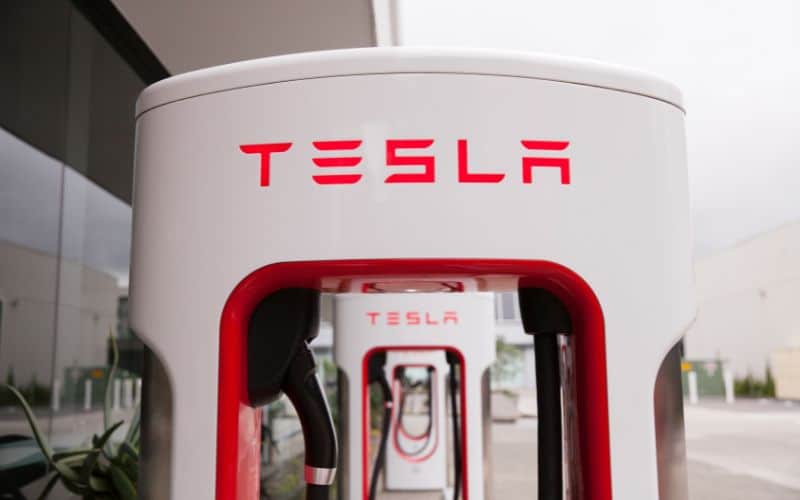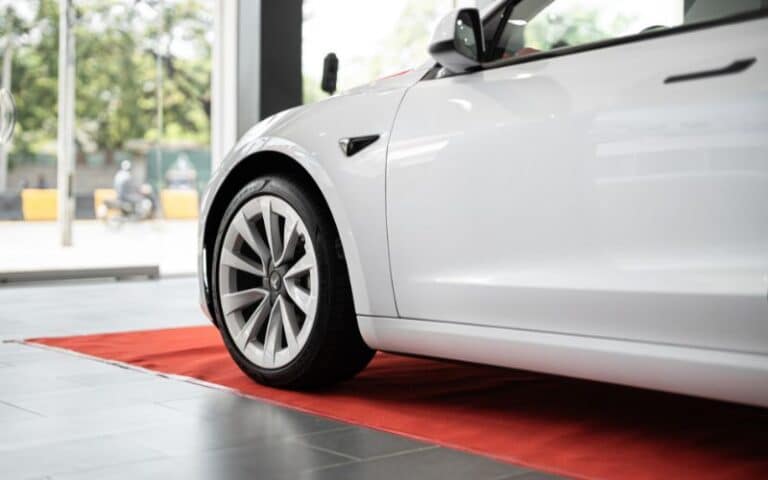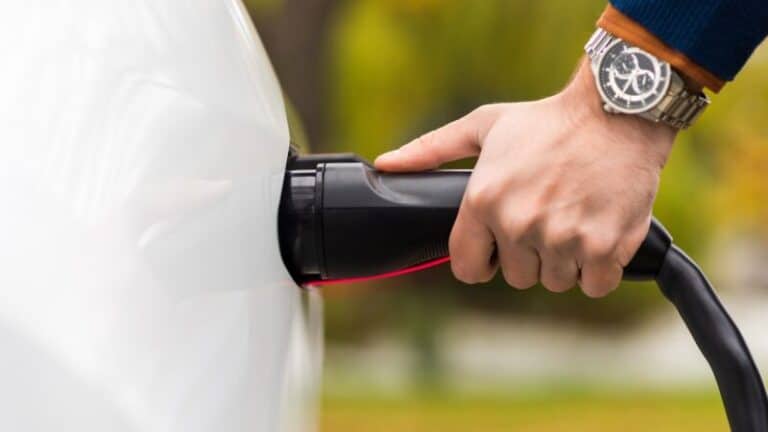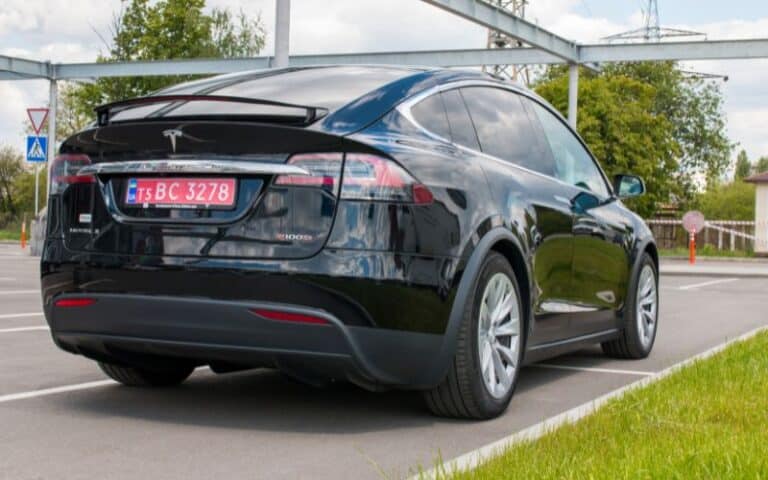Here is Why Do You Have To Tap Tesla Before Charging!
Many Tesla electric vehicle owners have become accustomed to tapping their cars before charging them.
It’s forgivable if you wonder why, as the manual has no directives for that practice.
So why do you have to tap a Tesla before charging it, as you might have seen people doing?
You don’t necessarily have to tap a Tesla vehicle before charging it, as there are no consequences to not doing so. However, you can do so to clear the charger of debris or open the charging port cover. The practice that seems like a charging tradition is just a misunderstanding of intent.
Why Do Tesla Owners Tap Their Tail Light Before Charging?

Tesla owners have different motives for tapping their vehicle’s tail light before charging.
However, very few of these reasons involve charging cars. Many adopt this practice not because they have to but because of its confounded theories.
Some Tesla drivers tap the taillight of their vehicles because they believe they can improve charging efficiency.
To them, tapping the charger against the port cover makes charging faster.
There is very little evidence to support this claim, and it doesn’t make a difference whether you tap or not.
Things like ice, stones, and other pieces of dirt can clog the port or chargers and interfere with the charging process.
Tapping the charger against the taillight is a good way of ridding it of these things.
Some Tesla drivers tap their cars before charging to rid the chargers of debris.
One way to open the Tesla charging port door is by pushing and releasing, which can look like tapping.
The port door is part of the taillight, and one can easily misunderstand the process of opening it as tapping.
The motives behind some drivers tapping their taillight before charging are purely mythical or superstitious.
For instance, some believe that three taps bring Goodluck, and not doing so can jinx one.
Some people even think tapping three times on the tail light activates some hidden features on their vehicles.
Some other Tesla owners tap for no reason other than seeing others tapping.
They think the tapping is some pre-charging ritual for Tesla cars that they must follow.
These motives account for Tesla owners tapping their vehicles’ tail lights before charging them.
You don’t need to tap your car if there is no compelling reason for doing so. You could scratch or damage the charger if you hit it too hard,
Does Tapping Tesla Before Charging Make Charging Faster?
There is little evidence to prove that tapping a Tesla before charging makes it charge faster.
The primary determinants of the vehicle’s charging speed are the model and the charging method employed.
Tapping to charge faster is a myth concocted out of some electricity theories.
The idea is that static electricity gathers at the charge port and increases the time required for charging.
Therefore, one needs to tap to align electrons and allow their free flow into the car to enable it to charge faster.
This idea sounds sensible, but many people have labeled it mythical and discarded it.
There is a slim chance that debris lodged in the charger could interfere with the vehicle’s charging speed.
Getting these obstacles out will improve the charging, and you can do this by tapping the charger.
This reason is the most logical for the idea of making a Tesla charge faster by tapping.
If you want to improve the charging rate of your Tesla, you should use the faster-charging options available.
These methods include superchargers and even Tesla wall connectors.
Tapping your tail light will not make your car charge in two hours if you need to plug it in for a day.
How Long Does It Take To Charge Tesla?
Charging a Tesla can take anything from 15 minutes to eight days, depending on some conditions.
The vehicle model and versions, charging options, and how depleted the battery is, are the common factors influencing Tesla charge rates.
There are different types of chargers available for Tesla cars. The charger types give the charging options for a Tesla.
These chargers have different capacities and, thus, boost the vehicles at different rates.
Tesla home charging options include three chargers: NEMA 5-15, NEMA 14-50, and Tesla Wall Connectors.
The NEMA 5-15 standard charger for Tesla cars offers the slowest charging rate.
An hour of charging with this option will only add a range of four miles to the vehicle.
NEMA 15-50 is a significant upgrade on the NEMA 5-15 in terms of charging capacity.
This charger is capable of adding 30 miles in an hour of charge. That is to say, it can fully charge a Tesla in approximately 11 hours.
The Tesla Wall Connectors are the fastest home charging option available for a Tesla vehicle.
It gives 44 miles range in one hour of charging and can charge a vehicle completely in about seven hours.
Overall, Tesla Superchargers are the fastest means of powering Tesla electric vehicles.
These chargers boast an enormous capacity and can charge cars in minutes.
In 15 minutes, a supercharger can add 142 miles of range or more, depending on the model and version of the vehicle.
Model is another influential factor in the charging rate of Tesla vehicles.
The models and their versions have different battery capacities and, thus, take different times to charge.
The table below gives the Tesla models and their expected time for a full charge using the different home charging options.
| Model/Version | NEMA 5-15 | NEMA 14-50 | Wall Connector |
|---|---|---|---|
| Model 3 Standard Range Plus | 3.6 days | 8.8 hours | 8.8 hours |
| Model 3 Performance | 4.4 days | 10.5 hours | 7.2 hours |
| Model 3 Long Range | 4.9 days | 11.8 hours | 8.02 hours |
| Model S Performance | 5.37 days | 16.82 hours | 12.38 hours |
| Model S Long Range | 5.58 days | 17.47 hours | 11.82 hours |
| Model S Plaid | 6.97 days | 21.82 hours | 14.76 hours |
| Model X Performance | 7.10 days | 17.1 hours | 11.4 hours |
| Model X Long Range | 7.7 days | 18.86 hours | 12.4 hours |
| Model Y Standard Range | 5.1 days | 12.2 hours | 5.8 hours |
| Model Y Long Range | 6.8 days | 16.3 hours | 7.8 hours |
| Model Y Performance | 6.3 days | 15.2 hours | 7.2 hours |
The following table gives the charge rate of the Tesla models using superchargers or destination chargers.
| Model | Destination Charger(Miles of range per hour) | Supercharger(Miles of range per 15 minutes) |
|---|---|---|
| Model 3 | 44 miles/hour | 175 miles |
| Model S | 34 miles/hour | 163 miles |
| Model X | 30 miles/hour | 142 miles |
| Model Y | 42 miles/hour | 158 miles |
You can also calculate the time it will take for a Tesla to charge if you know the battery and charging wattages.
Divide the battery wattage by the charger wattage to get the charge duration.
For example, a 75kWh battery will take 6.52 hours to charge using an 11.5kW charger.
Conclusion
Some Tesla owners tap their vehicles’ tail lights before charging for various reasons.
Contrary to some of their beliefs, however, this practice does not improve the charging rate of electric vehicles.
If you want a faster charge for your car, use a charger with more charging capacity.






